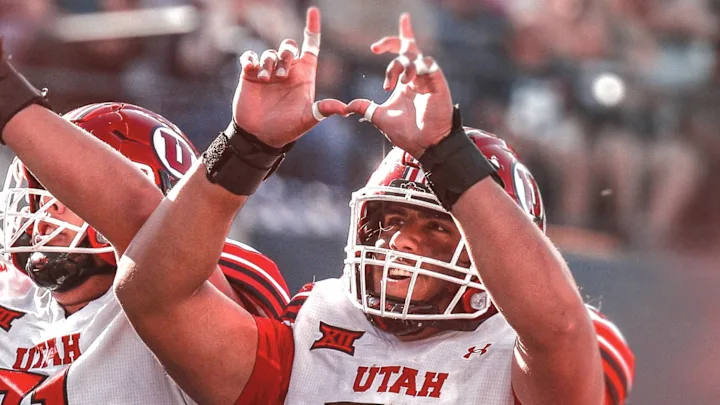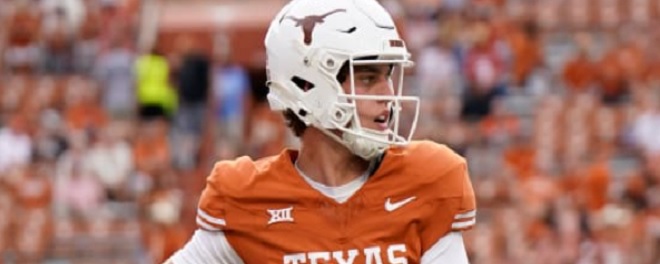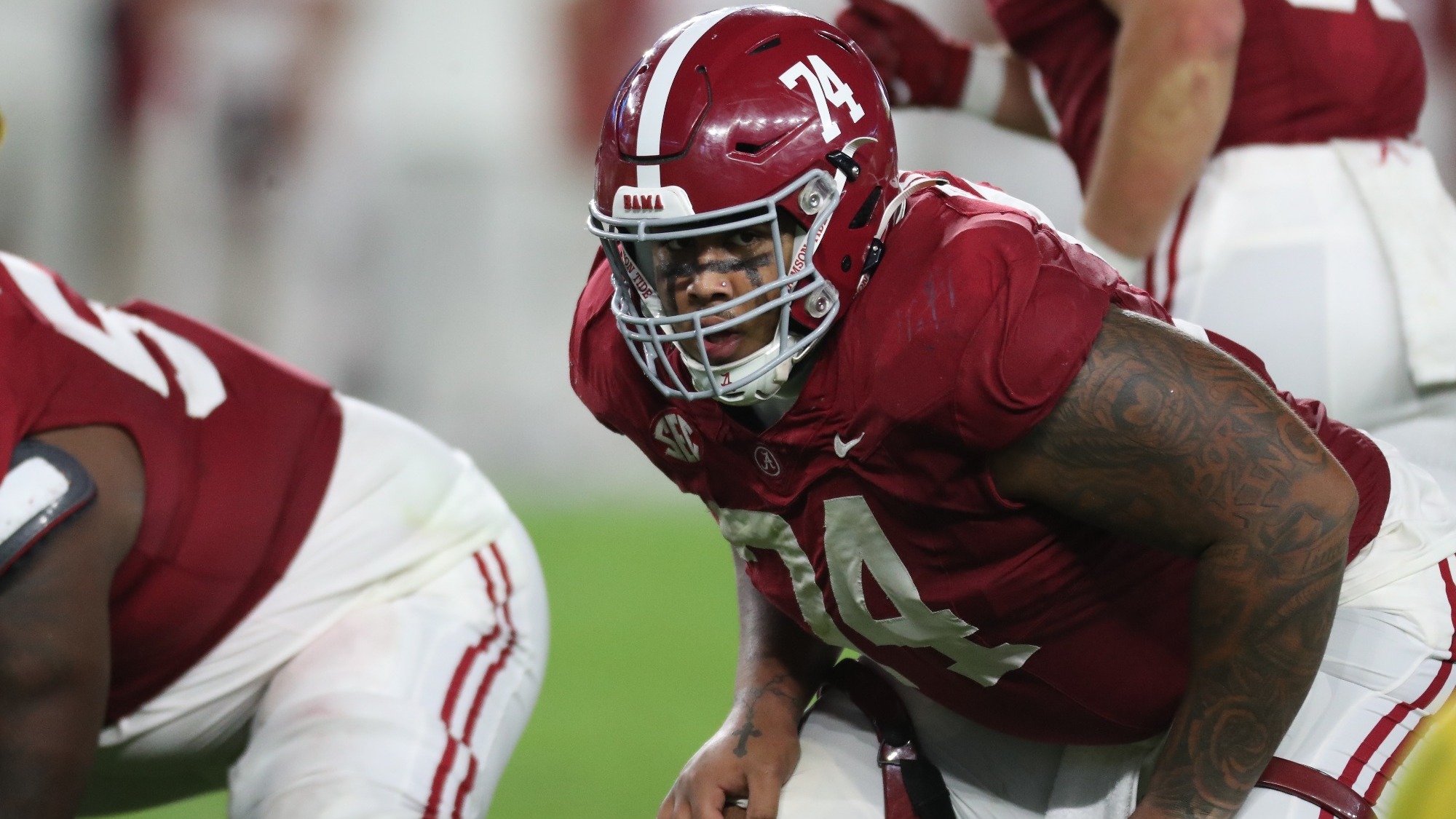By Charlie Campbell.
Send Charlie an e-mail here: [email protected]
Follow Charlie on Twitter @draftcampbell for updates.
This page was last updated Feb. 20, 2014. Follow me @walterfootball for updates.
Position Review: Wide Receivers
Wide Receiver Class
Early-round talent: A+
Mid-round: A-
Late-round: B+
Overall grade: A
2014 prospects vs 2013
Sammy Watkins > Tavon Austin
Mike Evans > DeAndre Hopkins
Marqise Lee > Cordarrelle Patterson
Kelvin Benjamin > Justin Hunter
Odell Beckham, Jr. > Robert Woods
Jarvis Landry > Aaron Dobson
Allen Robinson < Keenan Allen
Jordan Matthews = Terrance Williams
Last year, the wide receiver class was a B-grade class. There were some quality receiver prospects last year, but that class doesn’t matchup with this year’s group. This is an excellent class of wide receivers that could have a handful of wide outs go in the first round.
If you were to merge the two classes, Austin would go behind Watkins but ahead of Evans. Hopkins and Patterson would go behind Benjamin but head of Beckham. Woods and Landry are about equal. Dobson would go behind Landry and Robinson. Terrance Williams and Jordan Matthews are equal. Robinson will probably be selected earlier than where Allen was selected, but that was because Allen was injured leading up to the draft.
It will be interesting to see how this year’s prospects perform at the NFL Scouting Combine. We’ll do a wide receiver position-review update after the Combine as well.
Safest Pick: Sammy Watkins, Clemson

This was a tough choice as Watkins, Evans and Lee all look like safe selections. I went with Watkins because there is no doubt that he is a mismatch weapon for the NFL. Similar to Percy Harvin, Watkins is extremely explosive and could make plays in a variety of ways. He can score any time he touches the ball, so that makes him very dangerous on simple bubble screens, reverses, other carries and special teams – if used there. Watkins looks very safe as a vertical deep threat to stretch a defense. His presence alone can impact the game by opening up running lanes and underneath routes for other receivers.
Biggest Bust Potential: Kelvin Benjamin, Florida State

There is a lot to like about Benjamin with his combination of size and speed, however he needs refinement. There have been many talented first-round athletes who didn’t pan out because they didn’t work hard enough to refine their game. That would be the trap for Benjamin. He needs to improve his route-running and hands in particular. Benjamin drops too many balls, and his routes aren’t crisp enough. He’s too reliant on being bigger and faster than everybody else. I don’t think Benjamin will be a bust, but I don’t think he is as safe of a pick as the other definite first-round wide outs like Watkins, Evans or Lee.
Wide Receiver Rankings by Attributes
Separation:
NFL prototype: Calvin Johnson, Lions
- Sammy Watkins
- Odell Beckham, Jr.
- Marqise Lee
- Jarvis Landry
- Kelvin Benjamin
- Mike Evans
- Allen Robinson
- Jordan Matthews
Recap: A few wide receivers coaches told me that the ability to separate from coverage is the first trait they looked for in scouting draft prospects. Watkins is the best in this draft class at getting space from defensive backs. He does it with sheer speed and explosion out of his breaks, but also has the strength to fight off defenders. Watkins’ separation skills are NFL ready.
Beckham and Lee aren’t all that far behind. They are both fast receivers who can burn defensive backs with their deep speed and get wide open running down the field. Beckham could have issues with getting off jams at the line of scrimmage in the NFL.
Landry consistently gained separation via quickness and route-running in college, but he isn’t as explosive as the top-three in this class. Benjamin is fast running down the field and gets open, but he is more of a long-strider. Evans is similar, but Benjamin looks slightly faster, although he played a weaker caliber of defensive back.
The big question for Robinson and Matthews is the ability to get separation from NFL defensive backs. Scouts have told WalterFootball.com that they really question Matthews’ speed for the NFL. Both players could help themselves by running well at the Combine.
Hands:
NFL prototype: Larry Fitzgerald, Cardinals
- Jordan Matthews
- Jarvis Landry
- Allen Robinson
- Marqise Lee
- Odell Beckham, Jr.
- Sammy Watkins
- Mike Evans
- Kelvin Benjamin
Recap: This is a nice crop of sure-handed receivers. Some would probably disagree with me and put Landry first, and I would say they’re basically tied. I have Matthews rated first because he showed great hands while playing with quarterbacks who didn’t throw as catchable of passes as Zach Mettenberger. Both Landry and Matthews have superb hands.
Robinson, Lee, Watkins and Beckham all have reliable hands. Lee and Robinson were extremely reliable during the past two seasons with a high number of targets. Watkins’ hands were much improved in 2013 after having some drops during a rough 2012 season. After working hard to improve his hands in the offseason, being healthy and in the groove from the start of the season made all the difference for Watkins.
Evans doesn’t drop many passes, but it happens. Benjamin drops far too many. Those two have room for improvement and should develop into having steady hands in the NFL.
Deep Speed:
NFL prototype: Mike Wallace, Dolphins
- Sammy Watkins
- Odell Beckham, Jr.
- Marqise Lee
- Kelvin Benjamin
- Mike Evans
- Jarvis Landry
- Allen Robinson
- Jordan Matthews
Recap: There are a number of receivers in this group who have the ability to stretch the field vertically. Watkins is the most explosive receiver available and is a threat to burn double-coverage on any route. He has the speed to beat double-teams over the top and is a threat to score on any reception. Defenses have to account for him in the deep part of the field.
Beckham is a burner as a well. He is explosive out of his release and while making cuts. Beckham also has a second gear in the open field to pull away from the defenders. Lee showed more deep speed when he was healthy as a sophomore. If I wrote this a year ago, Lee could have been ranked first.
Benjamin and Evans are also dangerous deep receivers. They aren’t as explosive as the top-three wide outs, but both are extremely difficult to cover downfield because of their height. They go up to make receptions over defensive backs even when the defenders have good coverage. Evans and Benjamin made a lot of long receptions in 2013 and will be vertical weapons as pros.
Landry has some quickness to make receptions downfield, but he isn’t a true burner and doesn’t have the size to make up for it. Robinson and Matthews look like possession receivers for the NFL.
Route-Running:
NFL prototype: Reggie Wayne, Colts
- Marqise Lee
- Jordan Matthews
- Sammy Watkins
- Jarvis Landry
- Allen Robinson
- Odell Beckham, Jr.
- Mike Evans
- Kelvin Benjamin
Recap: Route-running is a critical part of gaining separation in the NFL. Receivers who get sloppy in their routes have a hard time getting open. Extra steps allow defensive backs to maintain coverage or more time to recover. In my opinion, Wisconsin’s Jared Abbrederis is in the running as the best route-runner in this draft class, but he isn’t in the top-eight receiver prospects heading into the Combine.
Lee is a superb route-runner. He is sudden in and out of his breaks with quickness. Lee does well in all levels of the field. The junior had a drop in his receptions in 2013, but that was because of injuries and shaky quarterback play. He got open despite not being 100 percent. His route-running as a sophomore was top notch.
Matthews really developed his route-running at Vanderbilt. He isn’t the fastest receiver, but his route-running helps make up for it as he is very polished.
Watkins really improved his route-running from his sophomore to his junior season. He has great feet, doesn’t waste steps and uses his quickness to consistently get open.
Landry is very good as well. He’s on a par with Matthews and Watkins. Throughout the 2013 season, Landry used route-running to get open and really does a nice job in the middle of the field of getting into windows between corners and safeties.
Robinson and Beckham are also good route-runners. Neither one of them should be knocked on that attribute.
Evans and Benjamin could stand to improve their route-running. They need to study bigger receivers like Calvin Johnson, A.J. Green, Larry Fitzgerald and Julio Jones. Both Evans and Benjamin can have some wasted steps and could stand to be more crisp.
Yards After the Catch:
NFL prototype: Julio Jones, Falcons
- Sammy Watkins
- Odell Beckham, Jr.
- Marqise Lee
- Kelvin Benjamin
- Mike Evans
- Jarvis Landry
- Allen Robinson
- Jordan Matthews
Recap: The ability to turn a short reception into a big gain can make a receiver elite. Among the eight receivers above, all of them have nice run-after-the-catch ability. There is no doubt that Watkins is the best yards-after-the-catch (YAC) receiver in the 2014 NFL Draft. He is electric in the open field. Watkins has the speed and explosion to run by defenders while also having serious elusiveness. Watkins is tough for defensive backs to chase down and bring down.
Beckham and Lee are very good after the catch. They are elusive in the open field. Beckham showed better YAC last year, but Lee wasn’t 100 percent. Both should be very dangerous in the NFL to break off big gains whenever either makes a reception.
Both Benjamin and Evans are very good with the ball in their hands. Each of them has enough quickness to move, but both are extremely tough for defensive backs to bring down. Benjamin and Evans can fight off tacklers and extend gains, too. Their respective size and strength allows them to break a lot of tackles from defensive backs.
Landry was a dangerous yards-after-the-catch receiver in 2013. He broke a number of nice runs off his receptions. As stated above, Robinson and Matthews are quality YAC receivers. Both can break tackles and rip off extra yards. However, it will probably be diminished with the speed of NFL defensive backs.
Red Zone:
NFL prototype: Calvin Johnson, Lions
- Kelvin Benjamin
- Mike Evans
- Allen Robinson
- Jordan Matthews
- Jarvis Landry
- Sammy Watkins
- Marqise Lee
- Odell Beckham, Jr.
Recap: This was a tough category to rank because so many of the receivers were excellent point producers in college. Benjamin led them all with 15 touchdowns in 2013. He was tremendous in the red zone with his ability to make catches in traffic and leap over defenders. Benjamin makes it safe for quarterbacks to throw high for him as it will either be a touchdown or an incompletion. Evans is very similar to Benjamin, and that’s why the former Aggie is second.
Robinson and Matthews both have size to them with the ability to make contested catches. Landry is tremendous at out-fighting defensive backs for the ball, but he isn’t as big. It will be harder to do that in the NFL, but Landry is also adept at getting open in the condensed part of the field.
Watkins can also win in the red zone. He gets open of course, but also has underrated strength and leaping ability to make the catch.
Lee only had four touchdowns in 2013, but he’s better in the red zone than that total indicates. Beckham doesn’t have much size, but he can get open in the short part of the field.
Contested Catches:
NFL prototype: A.J. Green, Bengals
- Mike Evans
- Kelvin Benjamin
- Jarvis Landry
- Jordan Matthews
- Allen Robinson
- Sammy Watkins
- Marqise Lee
- Odell Beckham, Jr.
Recap: Throwing windows in the NFL are very small, and receivers have to be trusted to outbattle defensive backs for the ball. Lacking the ability to win contested catches results in more interceptions.
Evans is the receiver most likely to make a reception while a defender is playing the ball as well. He is very strong and attacks the ball. Evans made a habit of bailing out Johnny Manziel when Manziel would do some circus play and throw the ball up for grabs. Evans put on a clinics of making catches over defensive backs along the sidelines in 2013.
Benjamin has the strength and size to beat defensive backs. His superb athleticism allows him to make highlight-reel receptions over defenders. He should win his contested catches in the NFL, assuming he competes as aggressively as the defenders.
Even though Landry (6-1, 195) isn’t the biggest receiver, he is reliable at making receptions with defenders close by. Landry really stood out last season with his ability to outbattle defenders for the ball. He just has a knack for making catches with corners draped on him.
Robinson and Matthews are also very good at out-fighting defenders for the ball. Both are smart with how they position themselves to shield the ball and make receptions.
Watkins was typically open for Clemson, but he occasionally showed an impressive ability to get physical for the football. Even though Watkins isn’t ranked as high as others, he is definitely able to make contested catches.
Lee is similar to Watkins, but Lee’s down junior season disguised this ability to a degree. Beckham (6-0, 187) is probably smaller than those listed numbers, and he won’t be a receiver who out-physicals NFL defensive backs. Beckham could get pushed around and out-muscled for position on passes up for grabs.
Blocking:
NFL prototype: Reggie Wayne, Colts
- Jordan Matthews
- Allen Robinson
- Sammy Watkins
- Marqise Lee
- Mike Evans
- Jarvis Landry
- Kelvin Benjamin
- Odell Beckham, Jr.
Recap: Coaches love receivers who give a big effort as blockers. Almost every long touchdown run in the NFL has a receiver making a block to prevent the ball-carrier from being chased down. Some receivers are more aggressive about it. They seek out defenders to hit blocks when a fellow wide out catches a pass. There are also receivers who are lazy when it comes to blocking. Coaches hate it, which hurts a player’s ability to be on the field in the red zone.
The best blocker in this draft class is Matthews. He is a tough blocker who can push defenders around and never hesitates to get physical. Robinson is a good blocker, too. He does well doing the dirty work.
Even though Watkins isn’t that big, he can pack a punch. Watkins really fights for his blocks and one wouldn’t think he would be so aggressive. Watkins is an asset as a run-blocker.
Lee, Evans and Landry were all quality blockers last fall. All three could use work for the NFL, but they have good starting points.
Benjamin has the potential to be a good blocker, but he needs work. Beckham can display a willing attitude and does pretty well for being a smaller receiver, but blocking won’t be his calling card in the NFL by any means.
NFL Picks - Dec. 19
NFL Power Rankings - Dec. 17
2026 NFL Mock Draft - Dec. 17
Fantasy Football Rankings - Sept. 1



